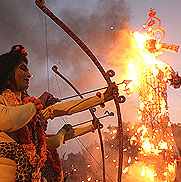 |
| a home away from home |
| HOME FEEDBACK TELL A FRIEND WEB SITE DESIGN CAREER WITH US CONTACT US |
![]() Festivals
Festivals
![]() Durga
Puja
Durga
Puja
![]() Associations
Associations
![]() Learn
Bangla
Learn
Bangla
![]() Beng.
Marriage
Beng.
Marriage
![]() Baby's
Name
Baby's
Name
![]() Art
& Craft
Art
& Craft
![]() Great
Indians
Great
Indians
![]() Beauty
Care
Beauty
Care
![]() Recipe
Recipe
![]() Astrology
Astrology
![]() Beng.
Section
Beng.
Section
![]() Bengal
Bengal
![]() Calcutta
Calcutta
![]() Tiger
Tiger
![]() Beng.
Calendar
Beng.
Calendar
![]() Wallpapers
Wallpapers
![]() Movie
Movie
![]() Music
Music
![]() E-Card
E-Card
![]() Shopping
Shopping
![]() E-Puja
Room
E-Puja
Room
![]() News
News
![]() E-mail
E-mail
![]() Month's
Events
Month's
Events
![]() Weather
Weather
![]() Chat
Chat
![]() Travel
Travel
![]() Join
Us
Join
Us
![]() Advertise
Advertise
![]() Website links
Website links
![]() Link
to us
Link
to us
![]() Guest
Corner
Guest
Corner
![]() Services
Services
![]() WebSite
Design
WebSite
Design

Dussehra is the tenth and final day of Durga Puja in Bengal and the rest of East, Navratri in North and West India and ; culmination of Ramlila in some parts of India and Madikeri Dasara in many parts of Southern India. Also known as Vijayadashami, Dussehra, commemorates the victory of Lord Rama over the ten headed demon king Ravana.
The Durga Puja which Lord Rama performs is the ‘akalbodhon’ worship of Goddess Durga to seek her blessings in order to subdue king Ravana and rescue his wife, Sita from his clutches. It is the victorious day when Lord Rama and Laxmana are able to kill Ravana, Dussehra or Vijayadashami is celebrated. With this victory crown Lord Rama, Laxmana and Sita return to their kingdom Ayodhya. To be welcome their beloved king after 14 years of exile, the people of Ayodhya light lamps and celebrate Diwali.
Dussehra symbolizes the victory of good over evil. The entire legend is enacted in various parts of India as Ramlila and finally on the Dussehra day, at sundown, actors playing Rama and Laxmana enact the final moments of the battle. Huge effigies of Ravana, his brother Kumbhakarna and son Meghnad are placed in vast open grounds. Fireworks and crackers of different types are placed in these effigies. Dressed as Rama and Laxmana, actors shoot arrows with flaming tips at the effigies from a safe distance amidst cheers from the crowds and the effigies are slowly engulfed in fire while beautiful fireworks are displayed and crackers with deafening sound entertain the onlookers. Merriment continues while the old and the young partake in games, dance and music. Fairs are held too where people flock to spend the rest of the evening.
Vijayadashami in Bengal_____________
Bengalis
however celebrate this great day as Vijayadashami or the final or the
tenth day of Durga Puja. It is the day when Bengalis bid farewell to the
Goddess by immersing her in Ganges as she leaves for her heavenly abode
Mount Kailash with her four children. Ritualistically ‘Bisarjan’ is done
in the puja premises by the priest who performs Durga Puja for the four
days. Married women in white and red saaries apply vermillion to the Goddess
and feed her with sweets. Later they apply vermillion or ‘sindoor’ to
their married friends and relatives and greet each other with good wishes.
The beautifully crafted clay idols of Goddess Durga are then taken to
nearby rivers amidst a cacophony of cheers and are immersed with heavy
hearts.
In other
parts of Southern, Eastern and Western India, Navratri culminates with
Vijayadashami, celebrating the triumph of the good over the evil where
the fearsome Goddess Durga vanquishes Mahishasura as Chamundeshwari or
Mahishasura Mardini.
Associated with Dussehra is the legend of Shami tree found in our epic Mahabharata. The Pandavas who were on their 14 years of exile in the forests, were to spend another year in disguise.
They possessed many divine and distinctive
weapons due to their skill as well as penance. Since the
last year of exile was crucial and as they had to take great care in not
being recognized they secretly kept their weapons in a Shami tree for
a year. A year later they returned to the Shami tree and found their weapons
intact. They offered prayers to the Shami tree as well as Goddess Durga,
the presiding Goddess of strength and victory. The Pandavas fought valiantly
in the battle and emerged victorious thus commemorating Vijayadashami.

This legend
finds mention in the celebrations of Navratri in Mysore where people exchange
Shami leaves and wish each other victory in their ventures. On the tenth
day of navratri celebrations, goddess Chamundeshwari is worshipped and
carried on a elephant mounted throne in a grand procession through out
the city of Mysore, from the Mysore Palace to Banni(Shami) Mantapa(pavilion).
On the ninth day of Dasara in Karnataka, Ayudh Puja is held where the
articles used in daily life are used such as computers, books, vehicles,
kitchen tools etc.
Madikeri Dasara is celebrated in Southern India. It has a history of over
100years. Dasara starts of with Kargas from four Mariamma temples. There
is a procession of ten Mantapas from ten temples on the night of Vijayadashami.
GREAT INDIANS || BENGALI SECTION || BENGALI MARRIAGE || BABY'S NAME || WALLPAPER || BENGAL || WEATHER || TRAVEL
MOBILE WALLPAPER || E-CARD || MOVIE || WEBSITE LINKS || ASSOCIATIONS || SHOPPING || ASTROLOGY || MUSIC || BEAUTY CARE
TIGER || NEWS || GUEST CORNER || FEEDBACK || LINK TO US || FOR ADVERTISING || SERVICES || CONTACT || BENGALI CALENDAR
Graphics, Sound or content copied or produced in part or whole in any media will be illegal.
Persons or websites caught using our material will be penalized.
Privacy Statement || Copyright
Copyright ©1999-2014 BANGALINET.COM